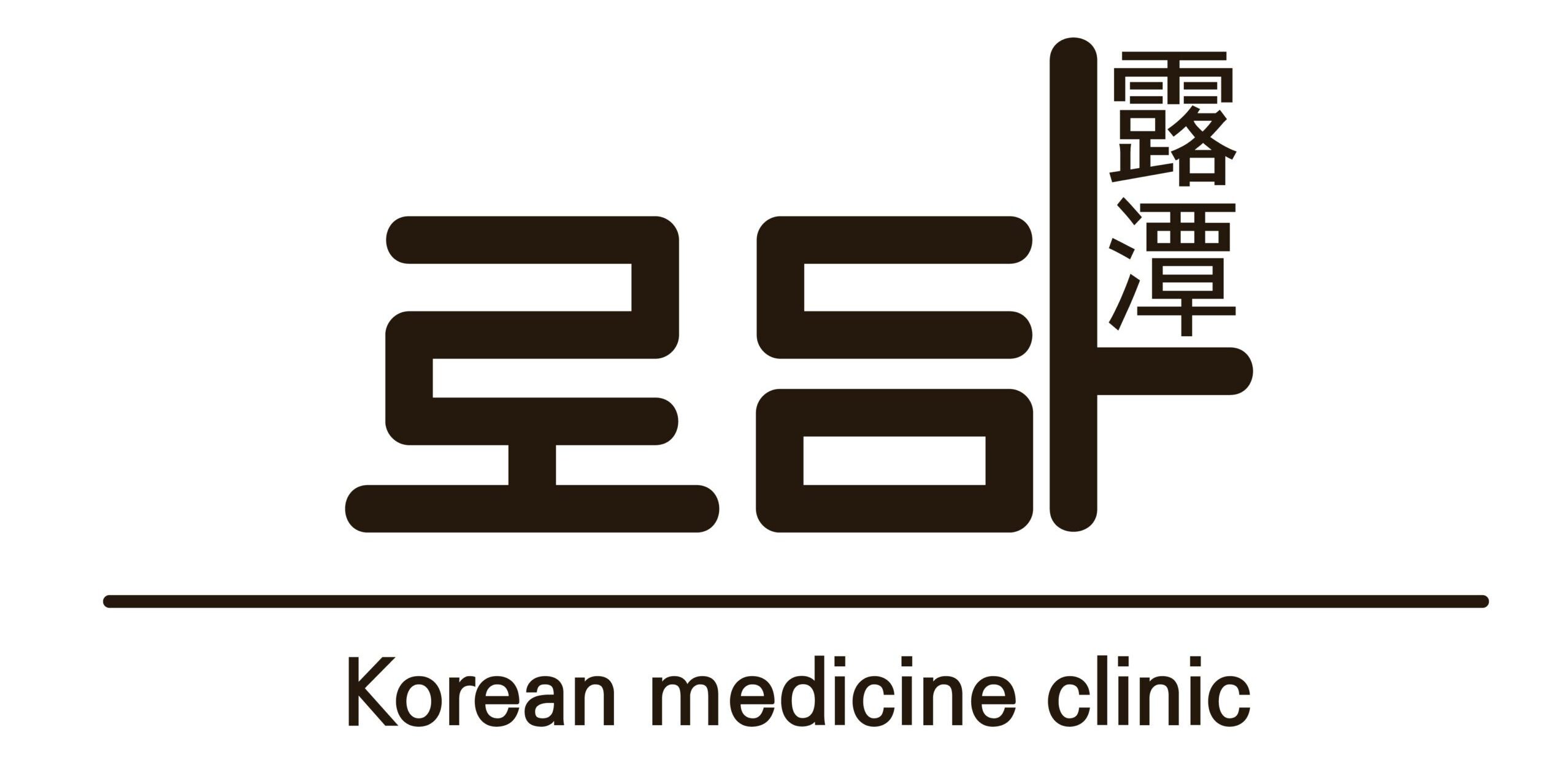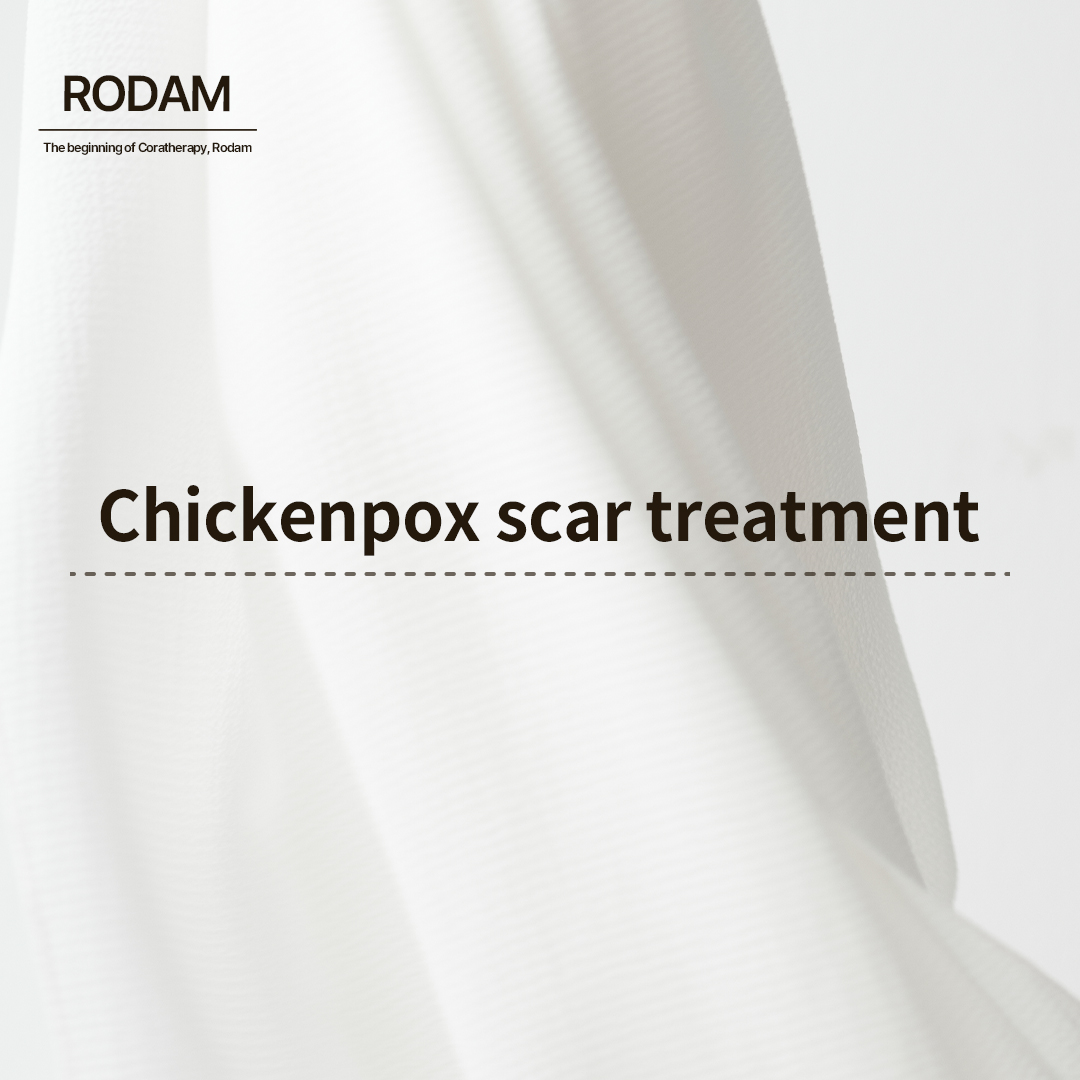
Chickenpox scars, Rodam Korean Medicine Clinic Coratherapy
Hello, this is Rodam Korean Medicine Clinic, the beginning of Coratherapy for scar removal.
Today, we have prepared a case of chickenpox scars for a woman in her 50s.
She visited us with concerns about chickenpox scars from her childhood.
The scar was located between her eyebrows, a highly noticeable area,
which made her more self-conscious.
Since the scar had been there for over 30 years and it was her first treatment,
she was very worried about the results.
We explained that chickenpox scars generally show good progress with treatment and began the procedure.
CASE :: Woman in her 50s, chickenpox scars between the eyebrows and below the eyebrow, over 30 years old
HISTORY :: Total of 6 Coratherapy sessions
REPORT :: Scar between the eyebrows filled evenly
Scar below the eyebrow showed slower progress at the edges
Before the treatment, there were two visible scars: one below the right eyebrow
and one in the middle of the eyebrows.
The scar in the middle of the eyebrows appeared relatively shallow,
while the scar below the eyebrow had a distinct border and appeared deeper.

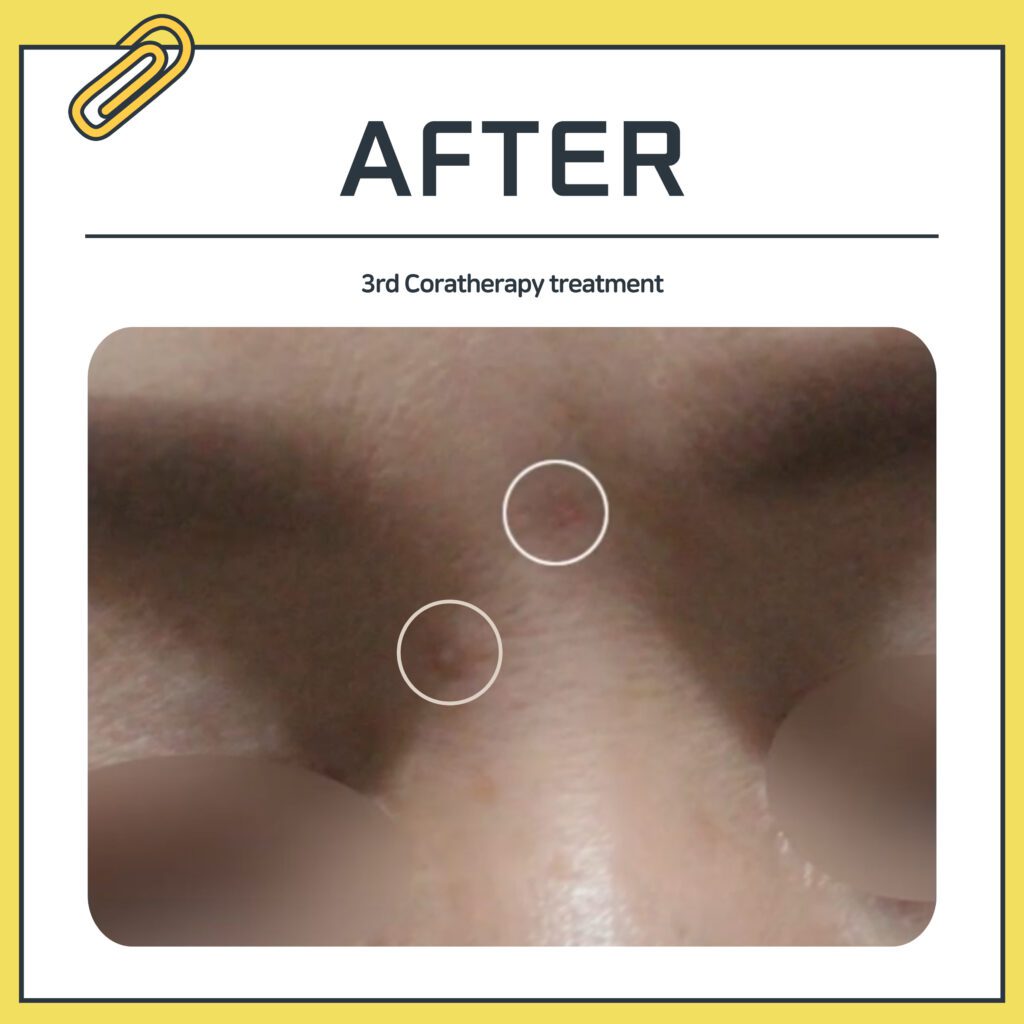
After the 3rd Coratherapy session
This is a photo taken after the 3rd treatment session.
The scar in the middle of the eyebrows shows an overall even filling of new skin,
while the scar below the eyebrow has started to fill from the center,
making the edges appear more pronounced.
The center part appears raised compared to the edges.
The next treatment focused on filling the less-progressed edges.

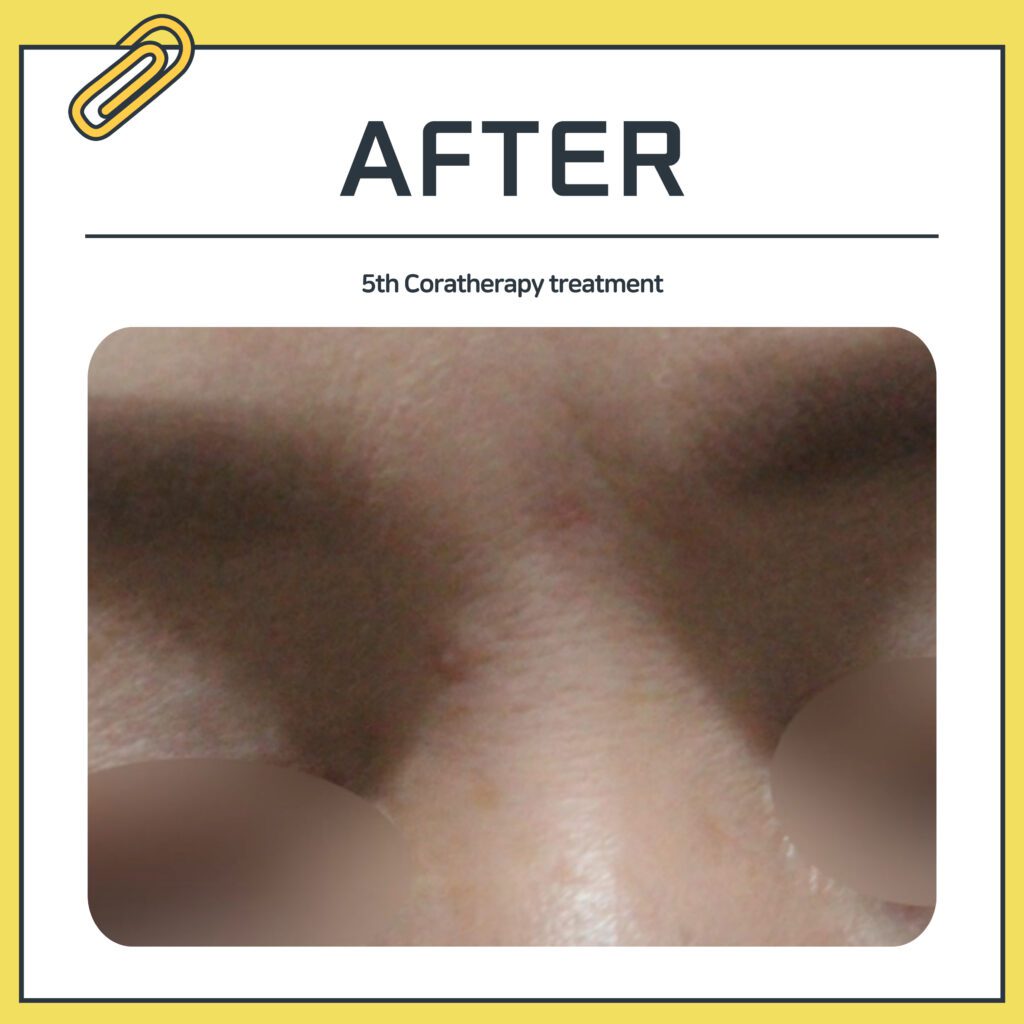
After the 5th Coratherapy session
This is a photo taken after the 5th treatment session.
The scar in the middle of the eyebrows still shows some redness,
but the height of the scar has evened out with the surrounding skin.
As for the scar below the eyebrow, the edges have filled in,
making the scar’s border less noticeable.
However, the center part still appears raised, and the surface remains uneven.
For the 6th session, we combined the treatment with a finishing procedure.

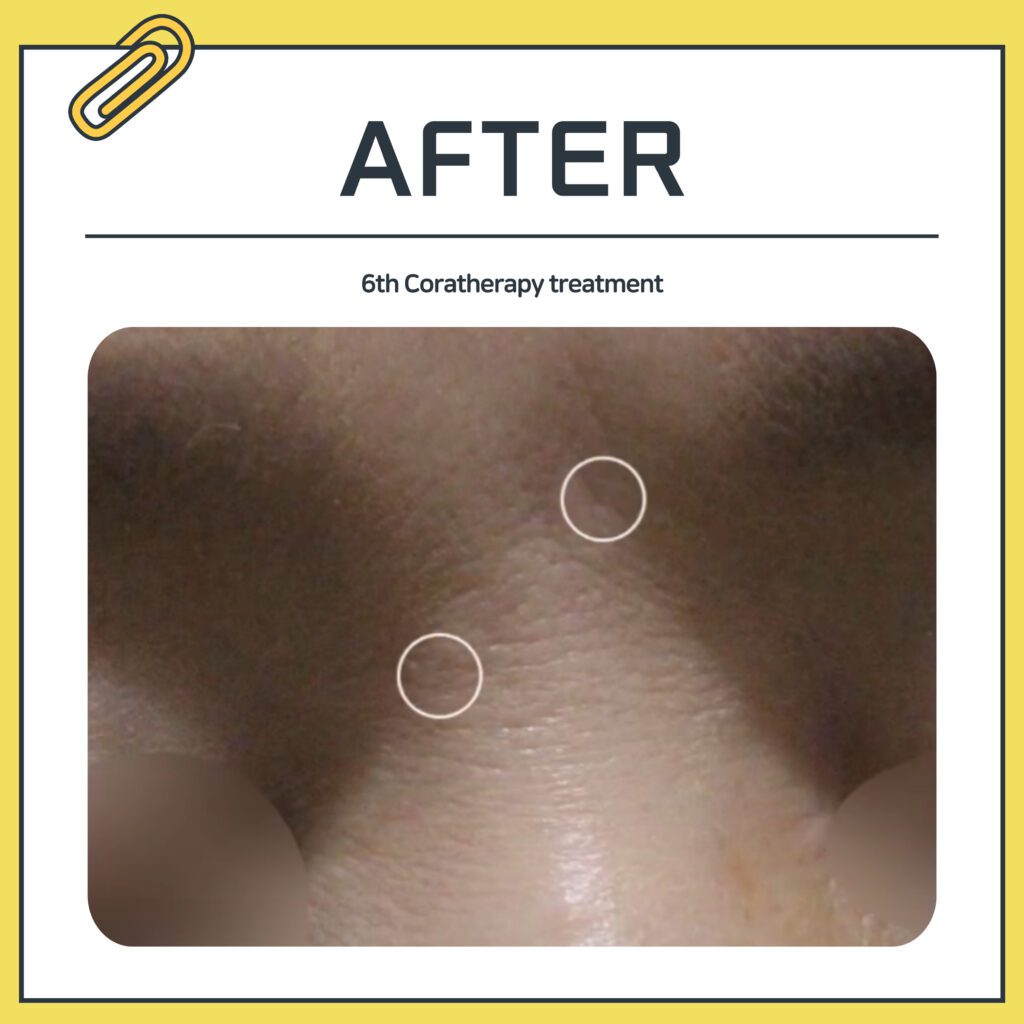
After the 6th Coratherapy session
After completing all 6 treatment sessions, the patient returned
for a follow-up consultation and photo session 4 months later.
Both scars had lost their redness, and the surface of the scars
had become smoother.
One key takeaway from this chickenpox scar case is that
for relatively large scars, even within the same scar,
the speed of filling can vary depending on the area.

Coratherapy works by breaking down the tangled fibrous adhesions beneath depressed scars,
stimulating the generation of regenerative substances to fill the scar with new skin.
In areas with strong fibrosis, even after breaking the adhesions,
the space may not open up easily, making it harder for regenerative substances to spread.
As a result, these areas may fill more slowly compared to areas with weaker fibrosis.
For scars with distinct borders, the edges are often more densely fibrotic than the center,
requiring more stimulation.
Coratherapy is not just about filling scars; it involves
meticulously adjusting the recovery speed and shape of the scar
to achieve a high-quality treatment outcome.
Rodam Korean Medicine Clinic leverages its expertise and experience in scar treatment
to help address your skin concerns.
We hope today’s post has helped alleviate some of your concerns about scarred skin.
If you have any further questions, please feel free to contact us anytime.
